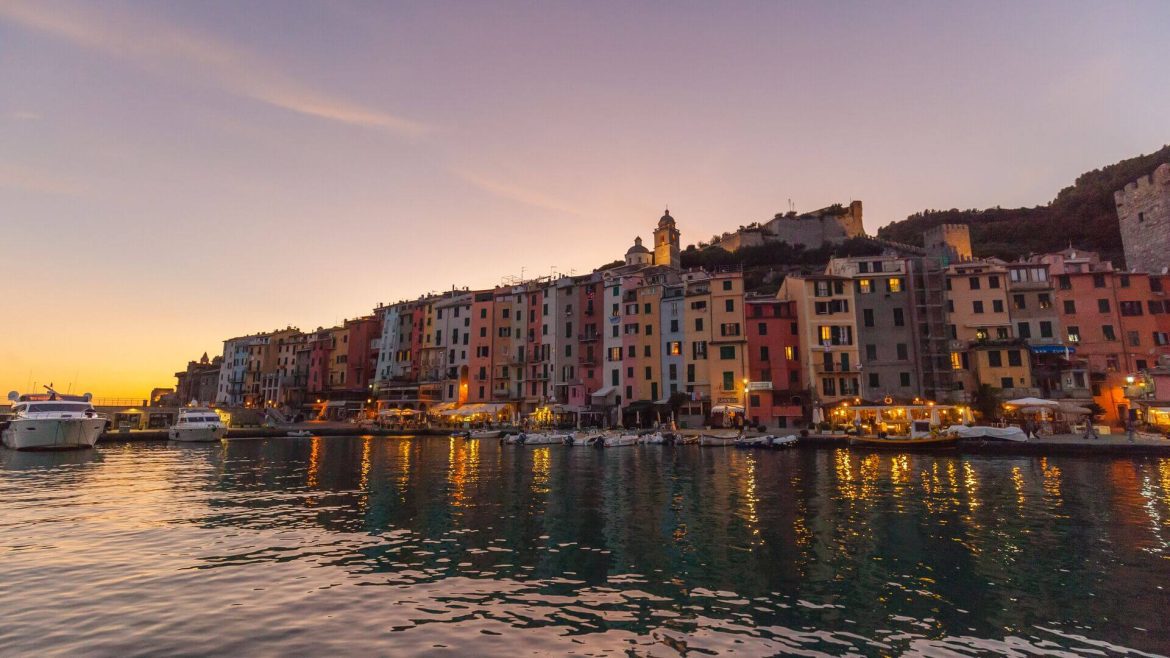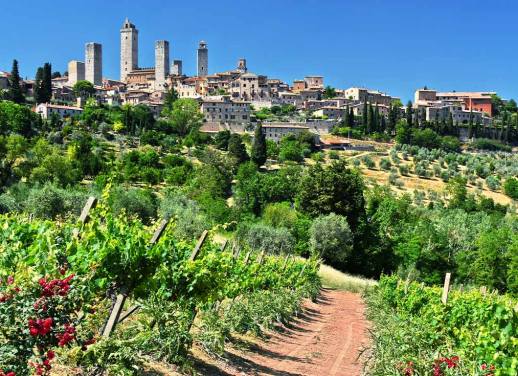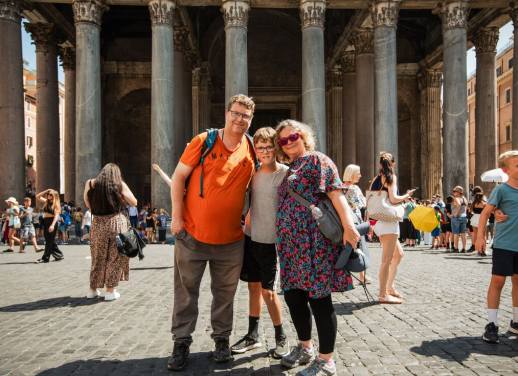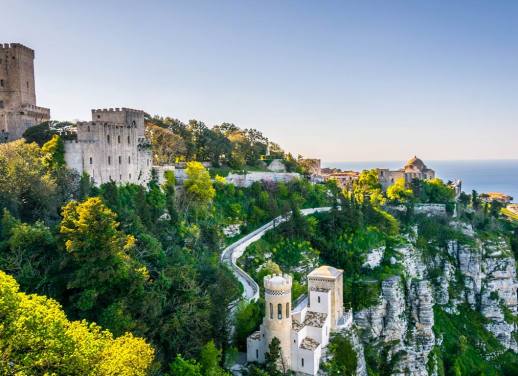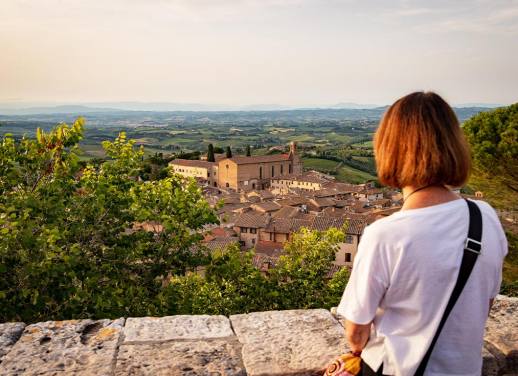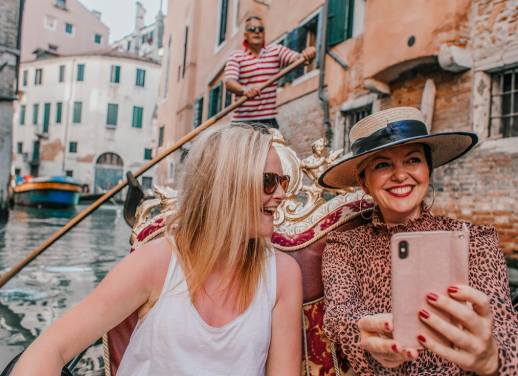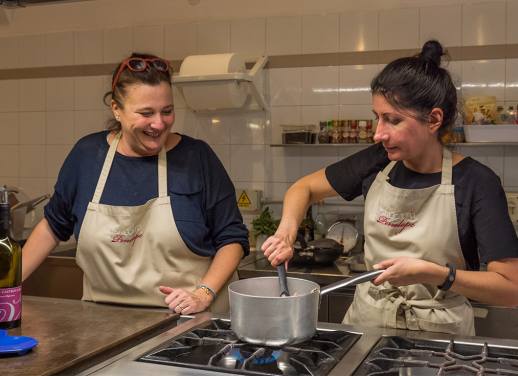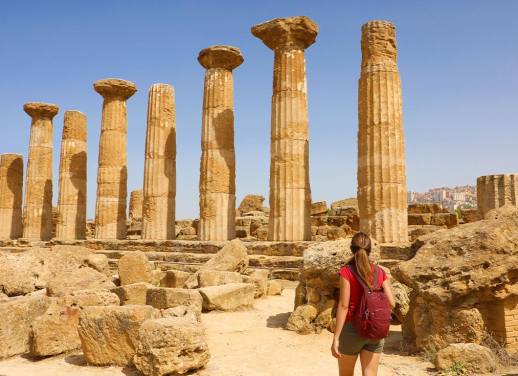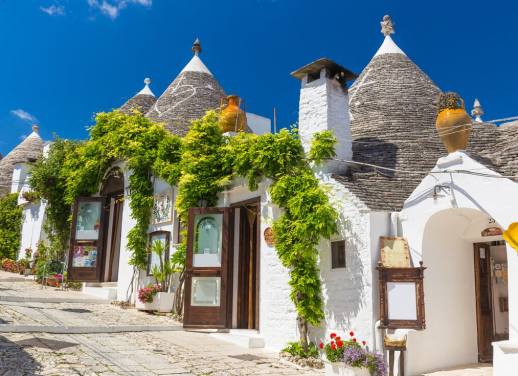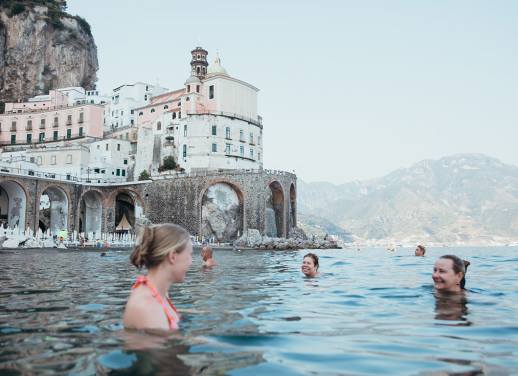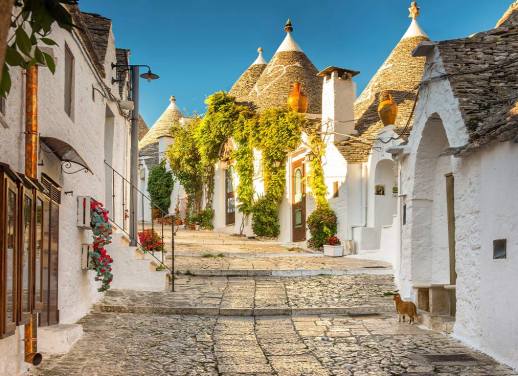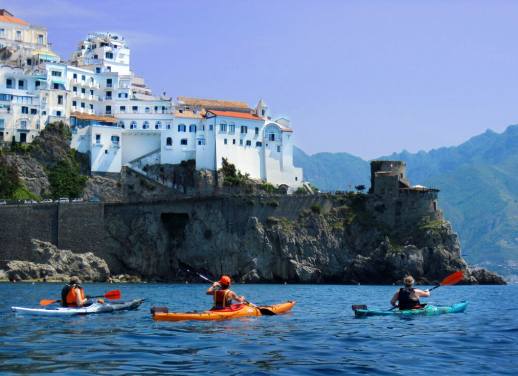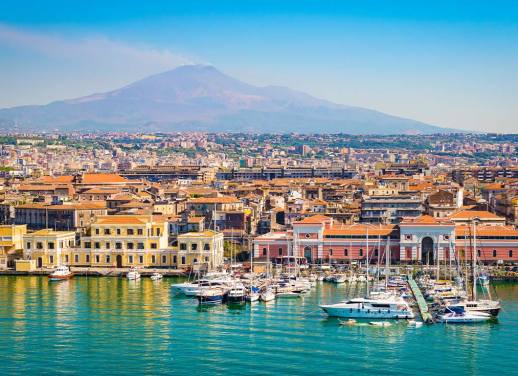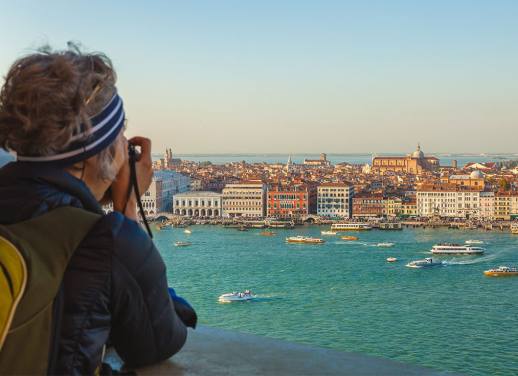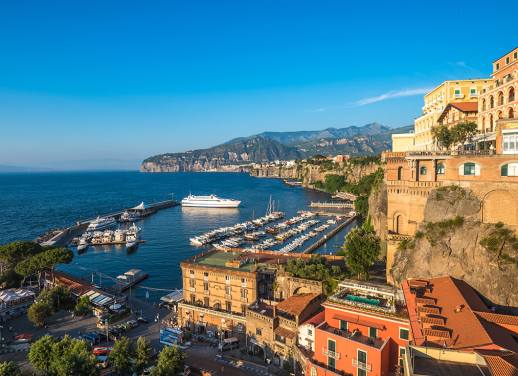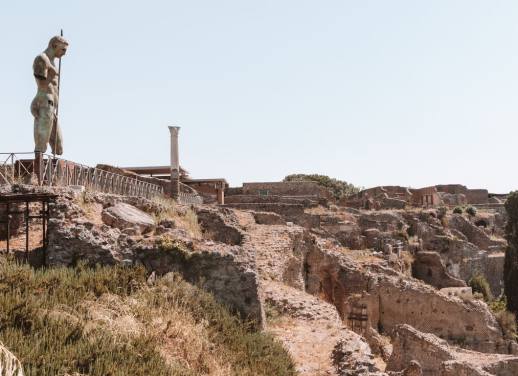One: decide on Italian holiday. Two: decide on where in Italy to holiday
It’s said that Rome wasn’t built in a day, and you certainly can’t see it all in one, either. The same goes for the rest of Italy. With snow-topped mountains, valleys of vineyards, rivieras, metropolises and endless coastlines, this is one jam-packed boot.
The first thing to do is to narrow down your next trip between the north and south.
Northern Italy is known for its alpine landscapes and cosmopolitan cities, while southern Italy is known for its laidback Mediterranean coastline.
Visiting northern Italy means you can tick off some major Italian cities like Milan, Venice and Florence in a short amount of time. You can also pair city breaks with time in the fields of Tuscany, the Cinque Terre seaside and the mountain runs of the Dolomites.
Southern Italy, while more known for its beaches and sailing trips, is also a must for those with an interest in Italian history and culture. Here, you’ll find the capital of Rome, the archaeological sites of Pompeii and Agrigento and the foodie hubs of Naples and Puglia.
Need a little more info before you decide? Here’s a quick look at everything: northern vs southern Italy.
Jump to
- Northern Italy: climate, regions and things to do
- Northern cuisine
- Best time to visit northern Italy
- Southern Italy: climate, regions and things to do
- Southern cuisine
- Best time to visit southern Italy
Don’t want to choose? See both!
Northern Italy
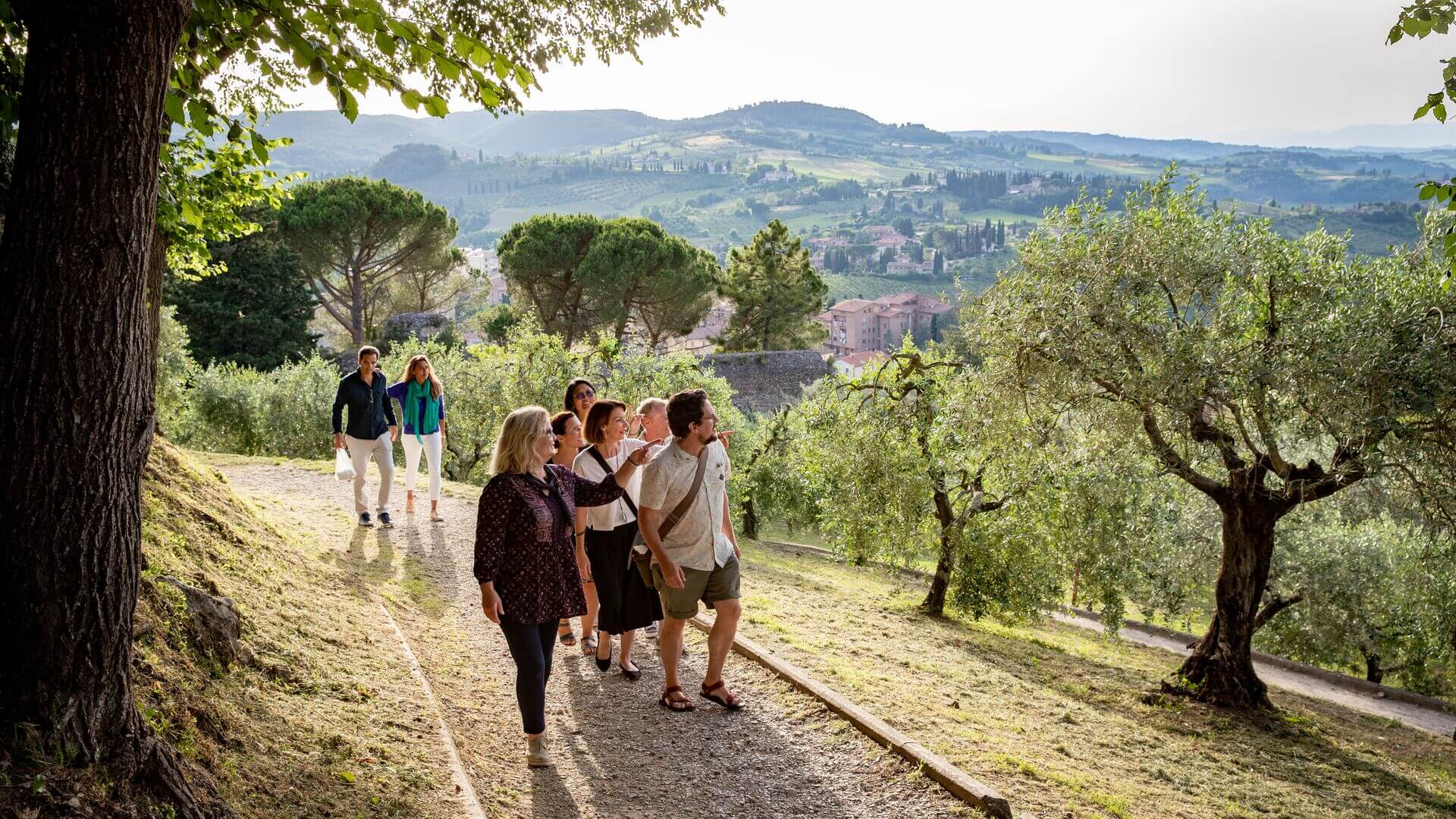
Climate of northern Italy
Characteristics: relatively warm summers, cold winters with snow in the mountains
Aside from the Liguria coast, which features Cinque Terre, most of northern Italy sees a slightly milder summer than the south. Winters are also colder, especially in the Alps, where snow typically falls from November to April.
Summers can still be hot and muggy, especially in the Po-Venetian Plain. Northern Italy is also more prone to thunderstorms and heavy rain.
Learn more about the best time to visit Italy
Northern Italy regions and cities
There are roughly ten regions in northern Italy. Here are a few northern Italian hotspot destinations:
- Tuscany – Florence, Pisa and San Gimignano – best for art, leaning buildings and the Chianti Wine Region
- Veneto – Venice and Verona – best for romantic cities
- Lombardy – Milan and Lake Como – best for the Italian Lakes and the fashion capital
- Liguria – Cinque Terre and Portofino – best for the Italian Rivera
- Emilia-Romagna – Bologna and Parma – best for classic Italian food
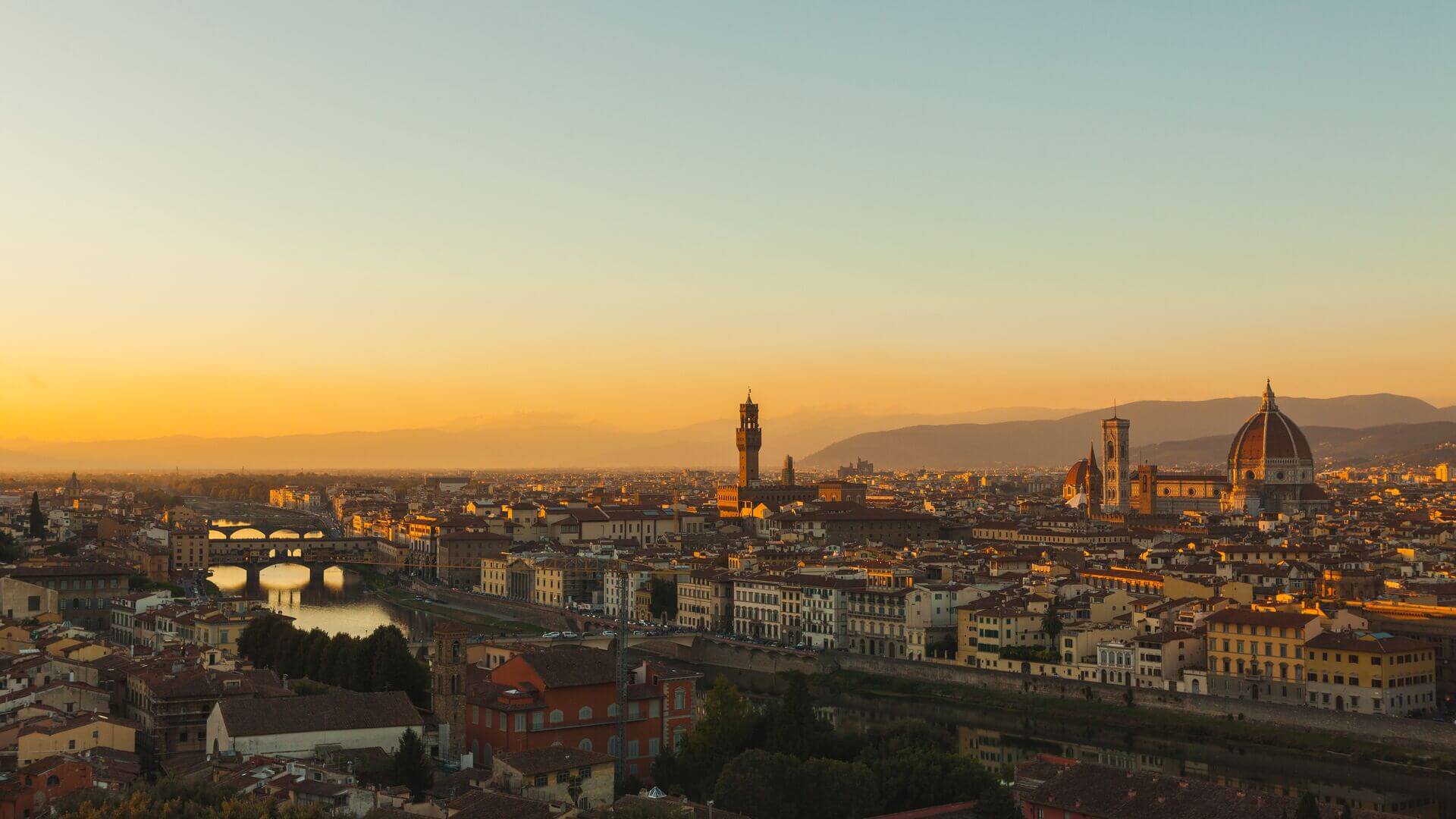
Things to do in northern Italy
With such a diverse range of scenery, cities and regionality, you’d need an entire guidebook devoted to the sights and experiences of northern Italy. You could take a picture at Pisa, swim at Cinque Terre, shop in Milan or eat your way through Bologna – the possibilities are endless. But here are a few unique experiences that encapsulate this enchanting northern region.
- A guided walk across Florence
Many of Florence’s iconic sights can be seen as you wander the streets. With an Intrepid local leader, you’ll hear about the city’s history, famous residents, cuisine and regional traditions. - Soak up the views in the Lake District
Spend a day wandering through small lakeside towns or ferrying past the upscale resorts and mansions of Lake Como and Lake Garda. Make sure to finish with a meal with a view – you might recognise the scenery from famous films. - Live like a Venetian
Toast to a day of traversing the walkways and crossing the canals like a Venice local with your group for a cicchetti snack at a local bacari.
Northern Italian food
The cuisine in this part of Italy is known to be hearty and rich. The further north you go, the more you’ll see French, German and Austrian influences. Think: apple strudel and bready dumplings.
Dishes here are more likely to have richer meats, starchier vegetables like potatoes, pasta made with eggs and food cooked with butter and cream. Here are some regional favourites:
- Ragù alla Bolognese
A meat-based sauce made with thick pasta, usually tagliatelle and invented in Bologna. - Risotto alla Milanese
A creamy risotto that’s made with parmesan, butter, wine and, most importantly, saffron. - Tiramisu
A cake made with ladyfingers, coffee, mascarpone and cacao dusting.
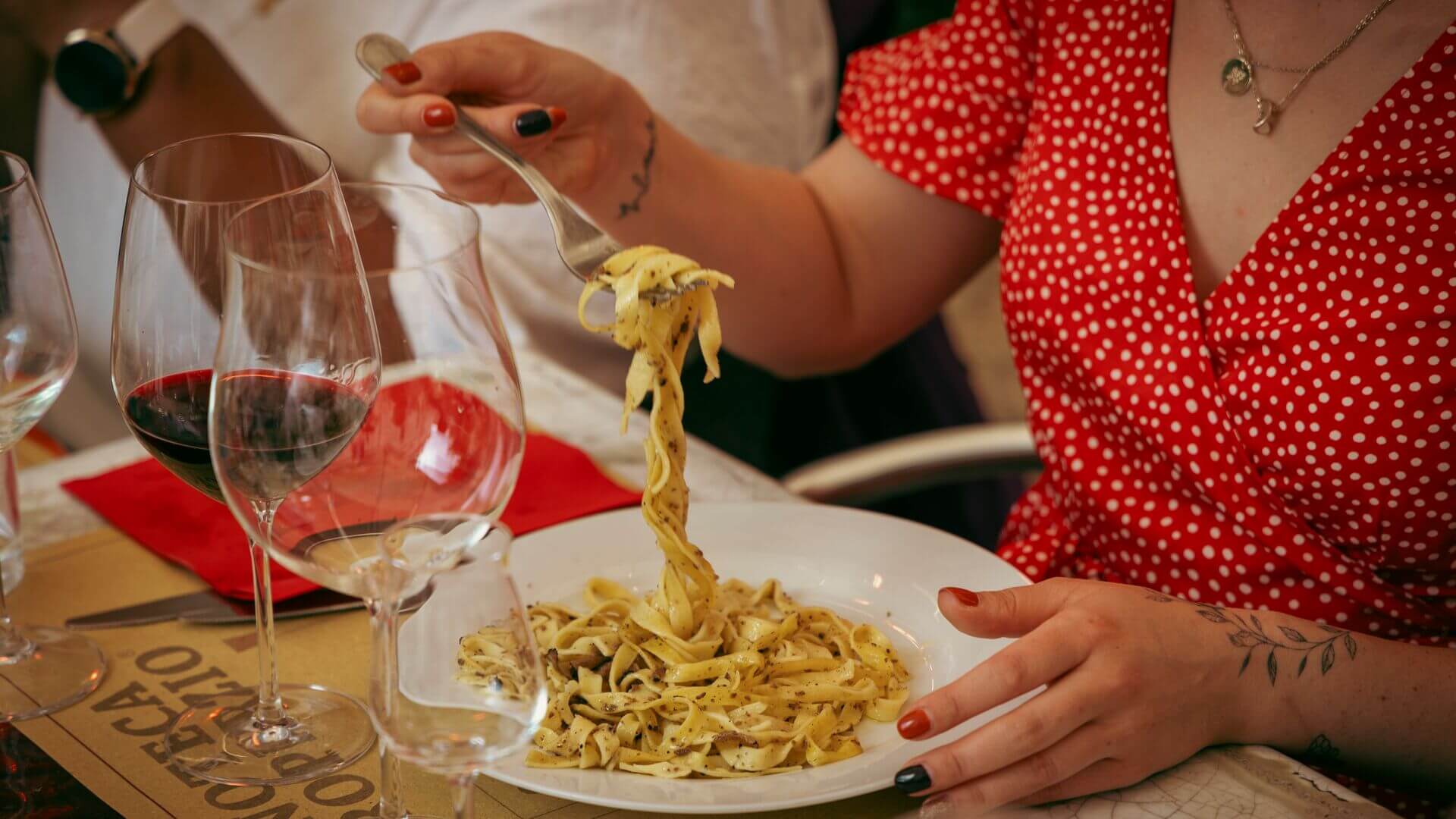
Best time to visit northern Italy
The shoulder seasons are always recommended for fewer crowds and relatively good weather. The best times to visit northern Italy are between mid-April to the end of May and September to mid-October.
- For low crowds: October to March
This is winter in Italy, and while it can get cold in the northern regions, there are fewer people around, making a trip during this time feel a little more authentic. - For beach weather: July and August
Naturally, summer sees the hottest weather, but this time of year will be the busiest.
Explore northern Italy the Intrepid way
Southern Italy
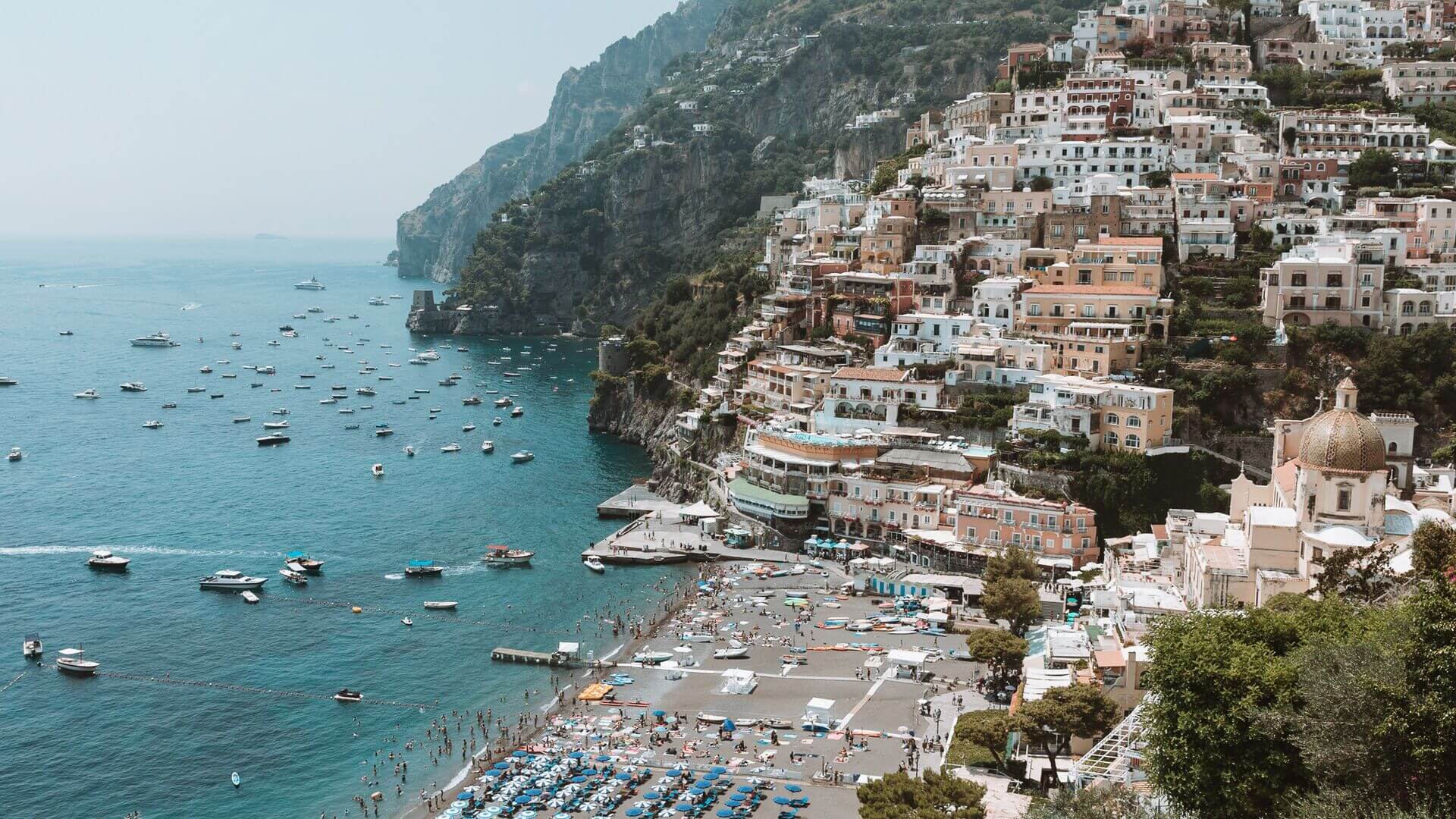
Climate
Characteristics: Mediterranean climate except for an interior mountain range
Southern Italy sits in the middle of four seas: the Tyrrhenian, Adriatic, Ionian and Mediterranean. This gives the south a classic Mediterranean climate, with sunny, hot and dry summers and mild winters that typically see the most rainfall in the interior.
Learn more about the weather in Italy
Southern Italy regions and cities
Including some of central Italy and moving down to both the ‘Toe’ and ‘Heel’ of the boot, southern Italy also includes the islands of Sicily and Sardinia. Here’s a snapshot of popular southern Italian regions:
- Lazia – Rome and Vatican City – best for the capital and cardinals
- Campania – Naples, Pompeii and the Amalfi Coast – best for pizza, Pompeii, ports and pools
- Puglia – Bari, Alberobello and Lecce – best for the ‘garden of Italy’
- Calabria – Reggio Calabria, Tropea and Civita – best for all things coastal
- Sicily – Palermo, Syracuse, Catania and the Aeolian Islands – best for big mountains and old ruins
- Sardinia – Olbia and Portisco – best for sailing the days away
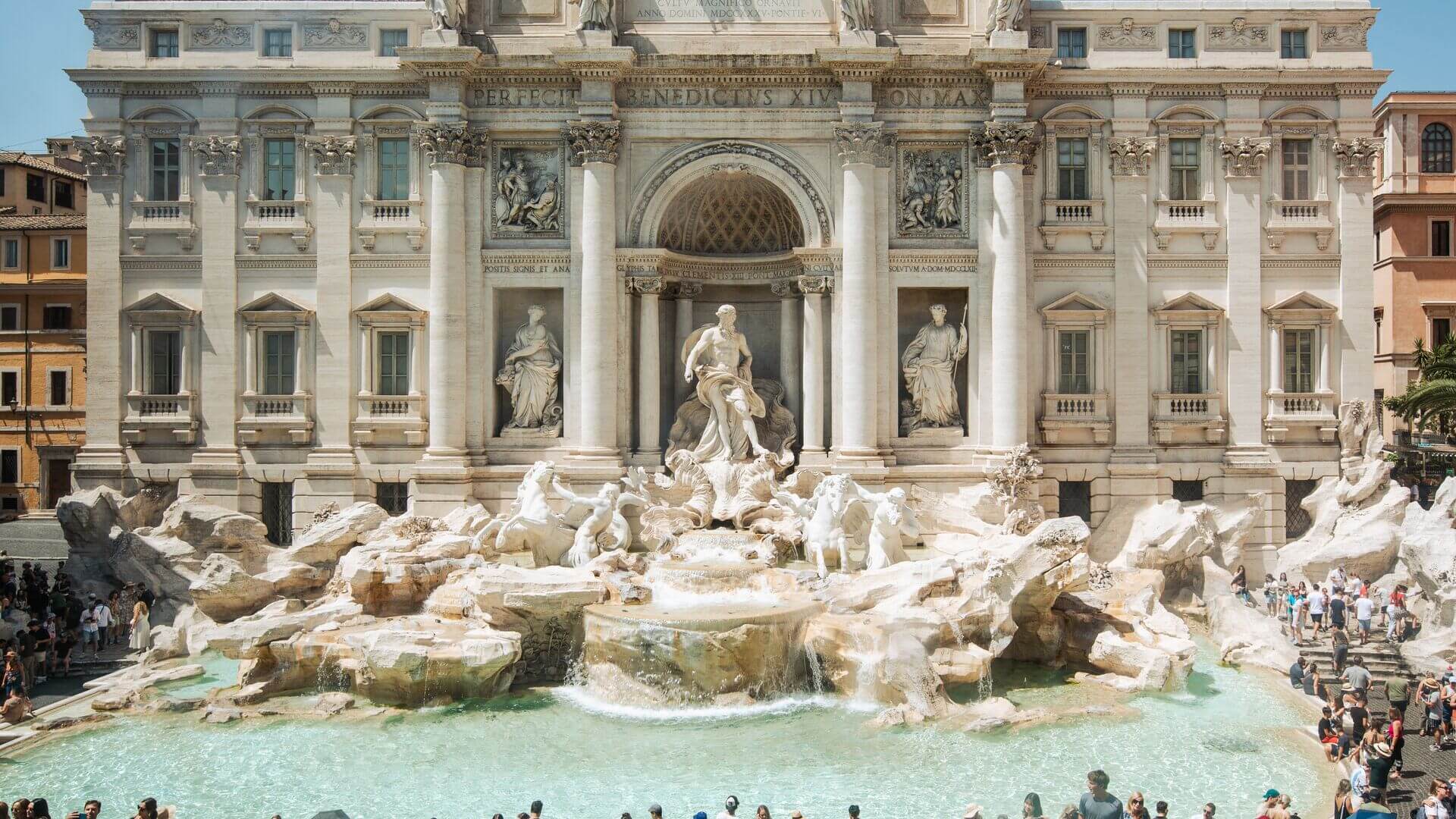
Things to do in southern Italy
Southern Italy is truly a choose-your-own-adventure destination. If you’re here for Amalfi beaches, hop between the cliffside villages or take a cruise along the Italian coast. Explore the cultures of lesser-known regions Calabria and Puglia, lean into Italian island life in Sardinia or go back in time at the Roman Colosseum and streets of Pompeii.
- Olive oil tasting in Puglia
Taste fresh olive oil then see how it’s made on a visit to one of Puglia’s signature masseria (farmhouses). Some of the trees here are thought to be around 3000 years old. - Step back in time in Sicily
The city of Agrigento is home to an archaeological area known as the Valley of the Temples. Built by the ancient Greeks, this area was a prominent Mediterranean city. - Walk the Path of the Gods on the Amalfi Coast
Get the best view of the coast on the Sentiero Degli Dei trail. High above sea level, you’ll walk past olive groves, fields of wildflowers and ancient stone dwellings.
Southern Italian food
Food in southern Italy is lighter, largely due to the use of olive oil instead of butter and an emphasis on seafood over heavier meats. However, this region is no stranger to cheeses, with world favourites mozzarella di bufala and burrata originating in the south.
The main ingredients tend to be veggies, herbs and fresh citrus. Here are some regional specialities:
- Scialatielli ai frutti di mare
This pasta dish mixes a red or white sauce with fruitti di mare (seafood), usually either one or a mix of lobster, muscles, shrimp or clams. - Pizza margherita
Pizza was eaten by Romans and Greeks long before the modern version came along. For the original Neopolitan-style pizza, visit Naples. - Cannoli
Cannoli is Sicily’s famous pastry and is made by frying a tube-shaped piece of dough, adding a filling of ricotta cheese and dipping it in pistachio, orange peel or cherries.
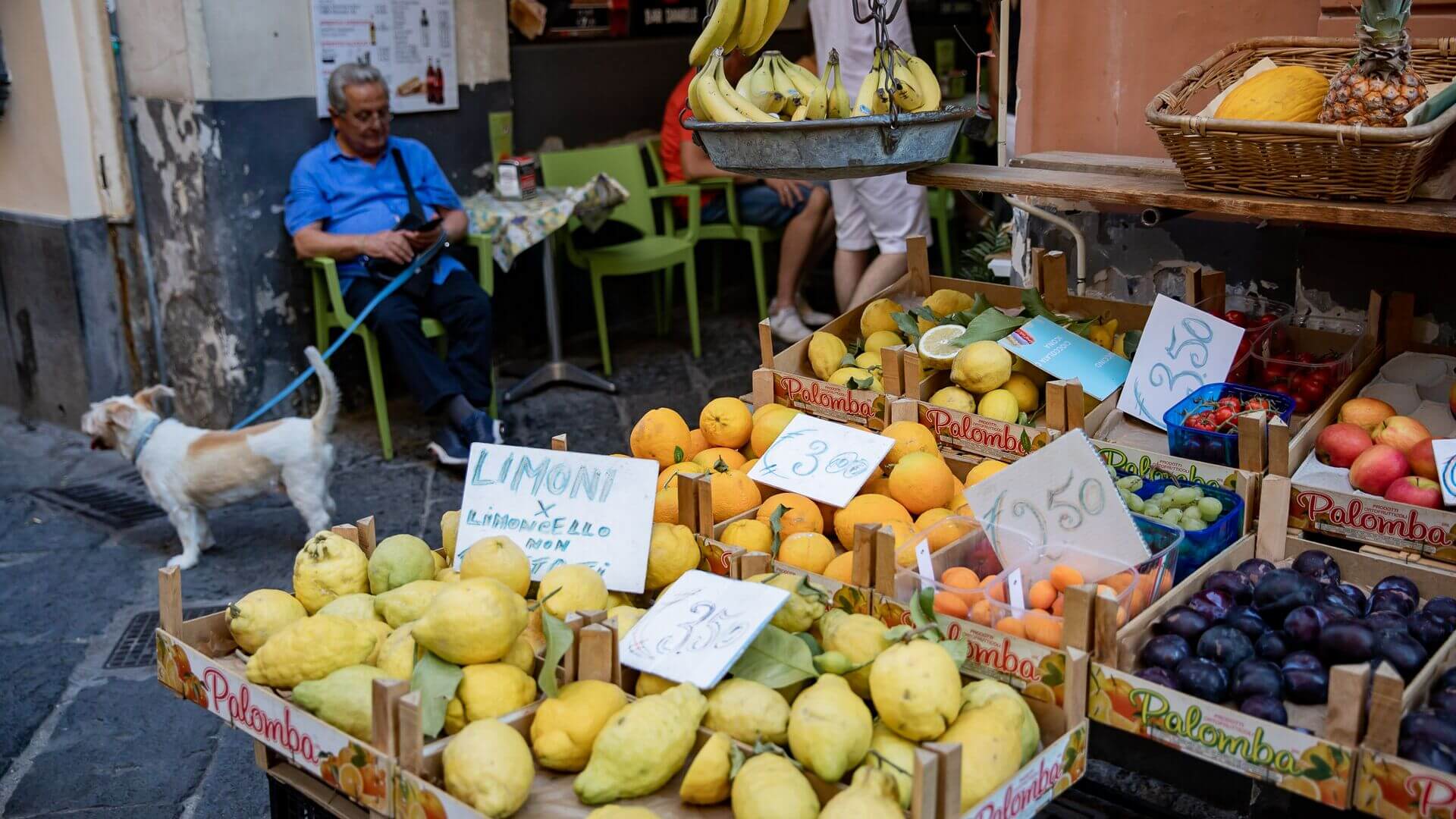
Best time to visit southern Italy
If you’re looking for a beach holiday, then the summer is the season. For an all-round trip, consider the spring or early autumn for fewer crowds and good weather.
- For low crowds: April to May and September to early October
The shoulder seasons on either side of summer generally see fewer visitors. - For beach weather: May to September
The warmest months are July and August, however it will be more popular with school holiday crowds and local Italians coming for their summer vacations. Come outside peak summer, May to June or September, for a quieter stay.
See southern Italy on an organised trip
Best of both
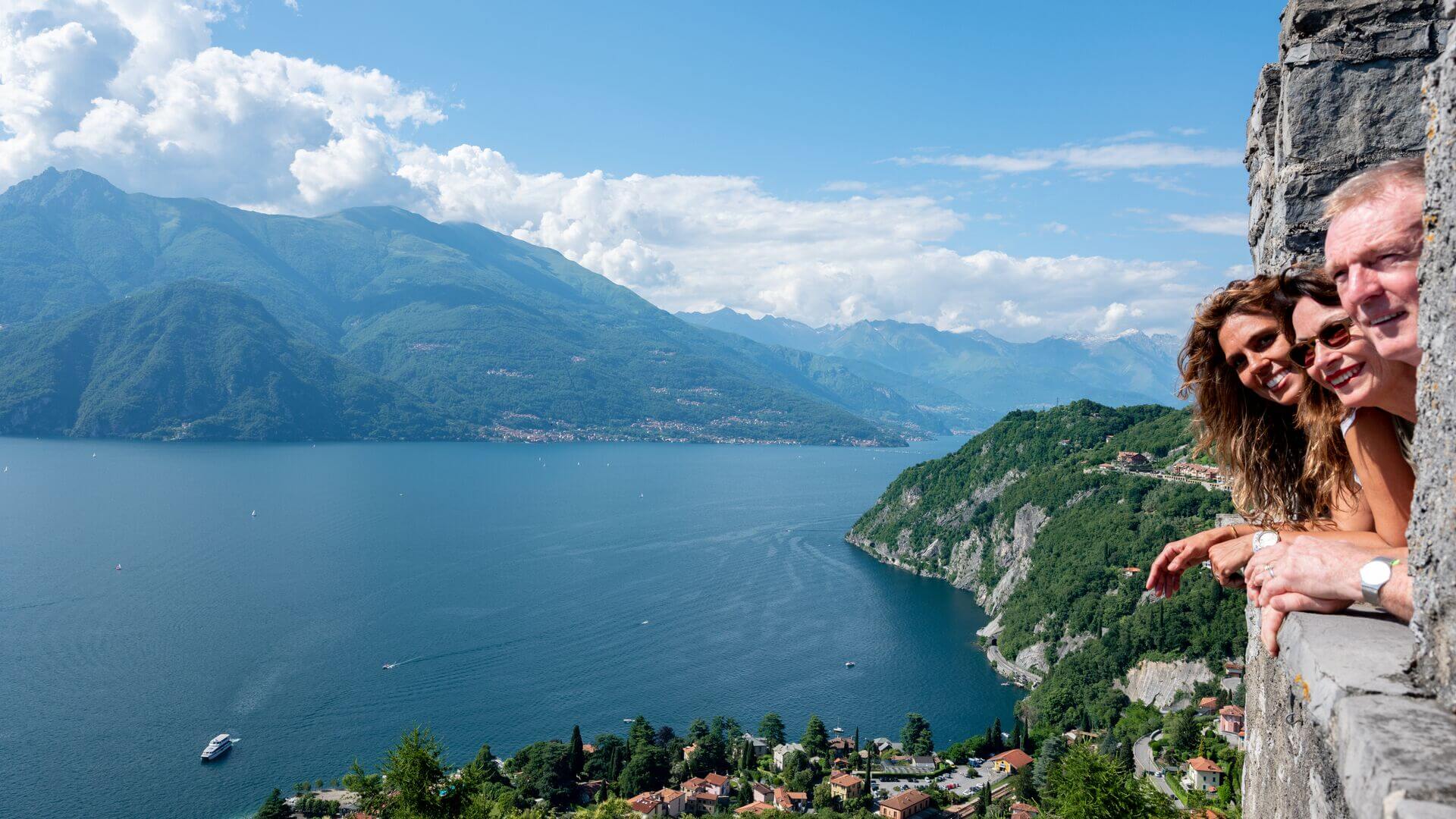
In a country like Italy, there’s always something more to see, so whether your next trip is north or south, you always have an excuse to come back for more dolce vita.
With an Intrepid small-group adventure, you’ll have an experienced local leader guiding you through it all. From learning how to cross the canals in Venice, where to get the best views in Cinque Terre, how to order an espresso ‘al banco’, see the heart of Italy with a local by your side.
View the range of Intrepid small group adventures through Italy

